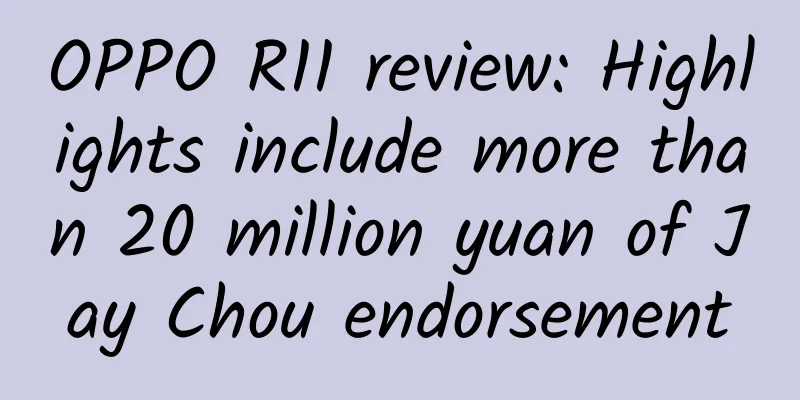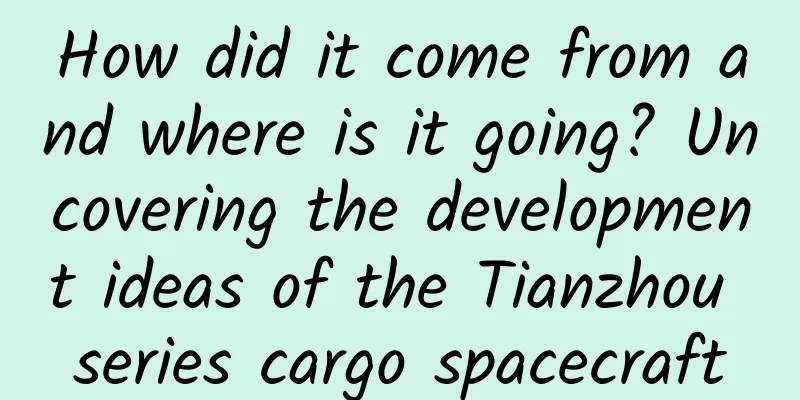OPPO R11 review: Highlights include more than 20 million yuan of Jay Chou endorsement

|
If there is a mobile phone manufacturer that has enough spokespersons to support a concert, and the influence of these stars is enough to allow a provincial TV station to hold an event similar to a "New Year's Eve Party", then from the perspective of the development history of smartphones in the past 10 years, there is only one brand, OPPO, that can do it. But on the evening of June 10, when everyone was screaming for Jay Chou, Jolin Tsai, JJ Lin, Stefanie Sun, and even Wang Junkai, some people inevitably had questions about the product itself: Is this phone really worthy of so many big names’ endorsement? The appearance and craftsmanship are first-class, more extreme than iPhone It is neither a mobile phone brand that always talks about "fever" nor one that wants to create a "jazz life" for you. Therefore, for OPPO, which relies on its "face" to make a living most of the time, design and appearance are certainly important. Like the previous R9, the OPPO R11 is still a 5.5-inch screen phone. Its dimensions of 154.5mm×74.8mm×6.8mm and weight of about 150g are both more compact than the Apple iPhone 7 Plus with the same screen size. What is particularly commendable is that despite its slim body thickness, OPPO R11 has a curved back that fits the palm of your hand. You should know that its built-in battery capacity is almost the same as that of iPhone 7 Plus. In addition, it is not just about maximizing the efficiency of body space utilization. OPPO R11 does not use glass or ceramic materials, and the inevitable antenna strip processing of the metal shell can be said to be better than Apple's industry-leading level. The antenna strips of the black version are definitely a stealth expert that exceeds your expectations. Regarding the hotly debated issue in the industry, "A 3,000 yuan phone doesn't even have a Type-C interface", OPPO's official statement, "Don't blame me if you can't connect the charging cable," is indeed a good reason. In addition, if you are given a Type-C but the 3.5mm headphone jack is removed, how many people would be willing to do that? The first Snapdragon 660 and ColorOS that feels more like iOS Under the premise that not many users will download benchmark software to test performance, OPPO still insists on launching the Qualcomm Snapdragon 660 processor first, and pairing it with a 4+64GB memory combination. This is relatively generous, and it did not adopt MTK's "one core in trouble, nine cores watching" approach. This is more than enough to meet the needs of games like "Honor of Kings". What is more worth mentioning is of course the performance in charging. With the support of the 5V/4A VOOC flash charging head, it takes about 20 minutes to charge the 3000mAh battery capacity of OPPO R11 from the 5% remaining red line to 50%, and it can be fully charged in just over an hour, which is satisfactory. The camera part is undoubtedly the highlight of the OPPO R11's upgrade. The front camera is 20 million pixels, and the rear camera is 16 million + 20 million pixels. From the simple data, we can see how powerful this "20 million front and back" is. Continuing its consistent product style, the improvement in imaging quality of OPPO R11 is understandable given its higher lens pixels and Qualcomm's customized optimized image processor. What is more to the users' pain points is the innovation in the details and usage of mobile phone photography, such as 2x optical zoom, background blur that can be achieved with the front camera, and 10s length of short video shooting that meets the full dissemination requirements of WeChat friends. It should be noted that the bulge of the rear camera of OPPO R11 is exactly the same as that of iPhone 7 Plus. In addition, the protruding frustum angle is not aligned with the edge of the antenna band, which is extremely unpleasant to people with obsessive-compulsive disorder in terms of visual perception. Finally, we have to mention the ColorOS 3.1 system on the OPPO R11. Like before, this ColorOS built on Android N still chooses to "pay tribute" to Apple's iOS, and also adds a sliding setting panel similar to the iOS control center at the bottom of the UI. Like the iPhone, it has an anti-blue light eye protection switch and various quick settings and application entrances, and based on localization, it has added WeChat code scanning and WeChat payment, allowing users to go directly to it in one step. For the vast majority of users, there is naturally no problem with the system fluency and ease of use of ColorOS 3.1. However, apart from the software system, the non-pressable solid-state HOME button at the bottom of the screen, which is inherited from OPPO R9s, compromises the operating feel. The traditional vibration feedback of mobile phones when touched is not as "realistic" as the non-pressable HOME button on the iPhone 7 that integrates the Taptic Engine. Fortunately, the independent return button and multitasking button have returned to the two sides of the HOME button. Compared with OPPO R9s, R11 can return to the most familiar operation method. 2999 is not cheap, but the next 20 million is basically set. If you think about the fact that Lei Jun's Xiaomi had to think over and over for several years before cautiously raising the price of the annual Xiaomi flagship to 2499 yuan, the OPPO R11 in front of you, whose processor is one level lower than that of Xiaomi 6, is priced at 2999 yuan. It is undoubtedly not cost-effective. However, the target audience and focus group of Xiaomi and OPPO have never been the same type of people. It is also certain that the number of users who spend all day thinking about running scores on their mobile phones is far less than the number of fans of Jay Chou, Jolin Tsai, JJ Lin, Stefanie Sun and even Wang Junkai. This gap also includes spending power. The most important thing is that OPPO, which can easily sell tens of millions of mobile phones with a single model while ensuring product quality, is not a mobile phone brand that requires you and scalpers to buy "gun goods". Just as Jay Chou would choose to publicly defend the interests of his fans at his concerts, from this point of view, his endorsement of domestic mobile phone advertisements was also not a wrong choice. As a winner of Toutiao's Qingyun Plan and Baijiahao's Bai+ Plan, the 2019 Baidu Digital Author of the Year, the Baijiahao's Most Popular Author in the Technology Field, the 2019 Sogou Technology and Culture Author, and the 2021 Baijiahao Quarterly Influential Creator, he has won many awards, including the 2013 Sohu Best Industry Media Person, the 2015 China New Media Entrepreneurship Competition Beijing Third Place, the 2015 Guangmang Experience Award, the 2015 China New Media Entrepreneurship Competition Finals Third Place, and the 2018 Baidu Dynamic Annual Powerful Celebrity. |
>>: After Ji Yue falls, who will be the next?
Recommend
Is it possible to reverse aging?
Staying young forever is everyone's dream, bu...
Competitive product analysis: Pinduoduo and Taobao's money-saving monthly cards
I am a heavy user of Taobao. Since I bought a mon...
Google has made two mistakes over the years
Google does so many great things that it can be h...
Strange quasi-periodic flashes were found in the Sagittarius A black hole, flashing once every 30 minutes
Astronomers using the Atacama Large Millimeter/su...
Google adopts new development strategy to improve Android security
Google has announced several key policy changes f...
The culprit for “loss of voice” may not be the air conditioner, there may be a serious problem behind it!
Although the beginning of summer has passed, Chon...
How much commission does a Tik Tok anchor earn from gifts? Where to watch?
Douyin is a very well-known short video platform....
Winning in design, high-end and classy or low-key and luxurious with connotation – iteration vs. planning
[[141348]] Mobile game design concepts typically ...
If in the future there is a spaceship that can fly one light year in one second, can it fly out of the universe?
This article is based on answering the weird ques...
World Sleep Day | Can’t sleep during the afternoon? Here’s everything you want to know about naps!
Today is World Sleep Day. Many people are concern...
How to play the lottery (how to get started for lottery novices)
Some people hear or see others winning the lotter...
A risk-free, zero-cost charlatan project that uses people's beliefs to make money
The word "shengun" has existed since an...
Google's machine learning has made a major breakthrough and its Go program will compete with Lee Sedol
On the morning of January 28, Google held a globa...
Baojun 510 automatic transmission model debuts at Guangzhou Auto Show: it is the best-selling small SUV in China
Just as Wuling Hongguang is often jokingly called...









